From the recent works
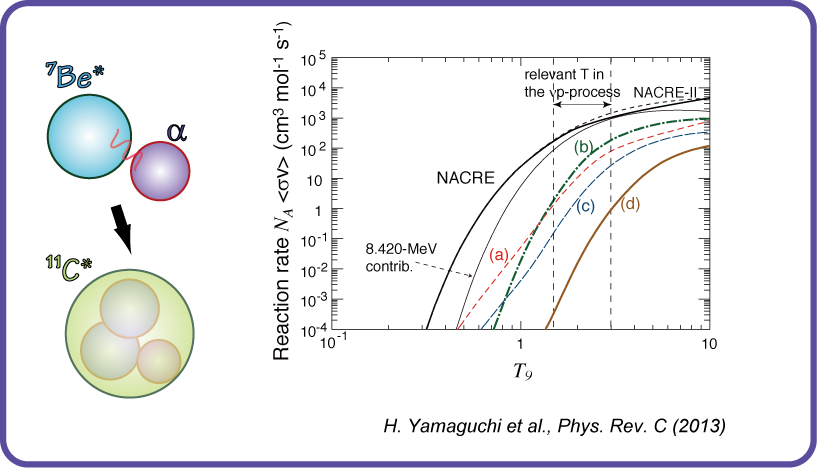 |
Alpha resonances in 11C and 7Be(α,γ) reactionThe nuclear resonances in 11C were studied using 7Be RI beam at CRIB. The 7Be(α,γ) reaction is known to play important roles in the synthesis of nuclei heavier than carbon. Especially, it produces carbon as much as the triple-alpha process, which was considered to be the most dominant process, in a nucleosynthesis process in supernovae, called νp-process. The reaction rate at high temparature is dominated by resonant reaction, but not much information on higher-lying resonances had been known. From our measurement, a more precise evaluation of the reaction rate at the supernova temperature became possible. The resonances are also important for understanding the alpha cluster structure in 11C nucleus. (See 7Li+α study below.) |
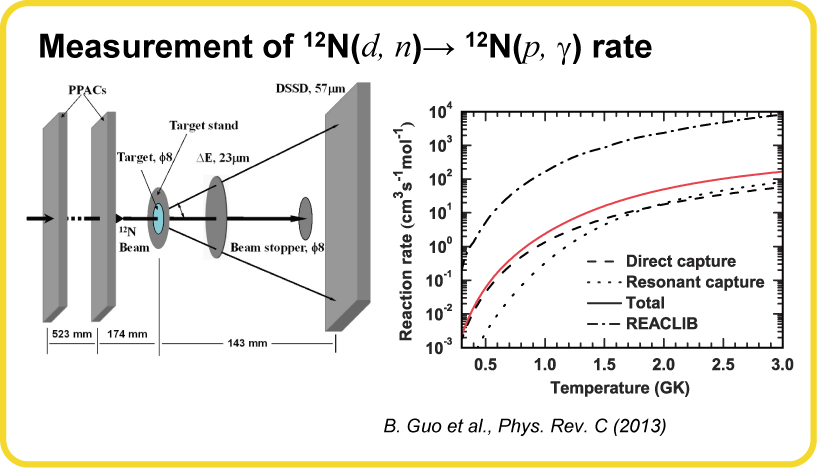 |
Study on astrophysical 12N(p, γ) reaction with ANC methodThe astrophysical reaction 12N(p, γ), a key reaction to produce nuclei heavier than carbon, was studied using an indirect method. We measured the angular distribution of a similar reaction, the d(12N, 13O) proton transfer reaction. By using a special analysis method called the asymptotic normalization coefficient (ANC) method, the reaction rate was successfully deduced. The new rate is two orders of magnitude slower than that from the REACLIB compilation. |
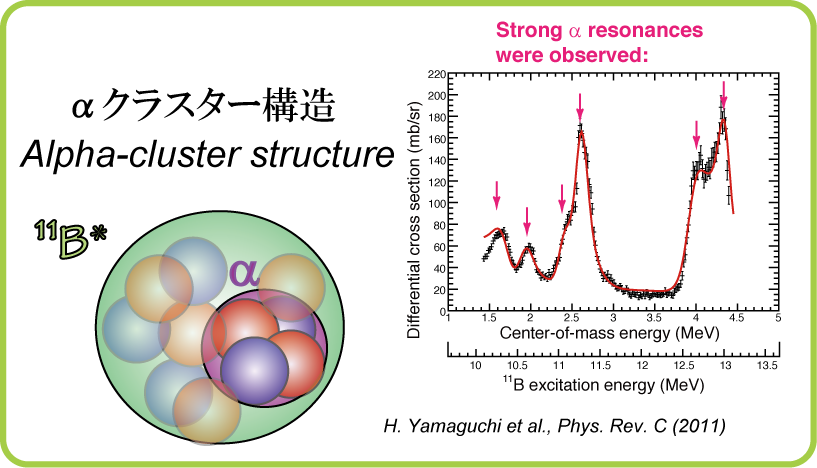 |
Alpha cluster structure in 11B, studied by 7Li+α scatteringIn relatively light nuclei, a structure called as α-cluster structure is often observed. Nuclei consist of protons and neutrons. In some cases, however, an α particle, which consists of 2 protons and 2 neutrons, acts as an independent particle in the nucleus. This can be called as an α-cluster state. There are also cases in which such α-cluster states forms a band structure, with a series of α-cluster states in the excited levels of a nucleus. We have observed many α-cluster like resonant states in 11B (Boron-11) nucleus, formed by a 7Li (Lithium-7) nucleus and an α particle, and we proposed a new α-cluster band structure. The information we obtained is valuable for a profound understanding of the nuclear cluster structure. |
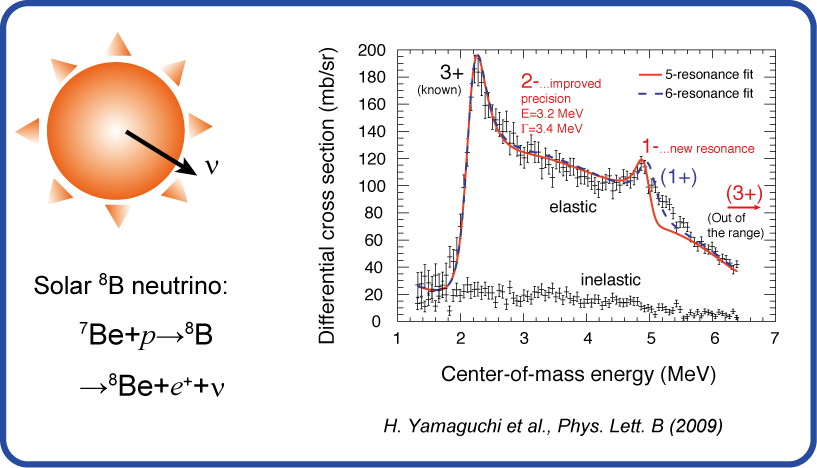 |
Studying resonant states formed by 7Be+pThe unstable 7Be (Beryllium-7) nucleus can make a reaction with hydrogen in the sun, forming a 8B (Boron-8) nucleus. Eventually, the 8B nucleus emits a neutrino on its beta-decay. The neutrino with that origin has relatively high energies and most frequently detected on the earth. To have a precise knowledge of the interior of the sun, there have been many studies to determine the rate how much 7Be are converted into 8B (reaction rate). In our study, we observed a very broad resonant state, which was said to be possibly influential for the reaction rate of the solar neutrino. Even the existense of the state was not certain with previous measurements, however, we observed the broad resonance state and determined its resonant parameters. We concluded the broad resonance makes negligible effect on the reaction rate. |
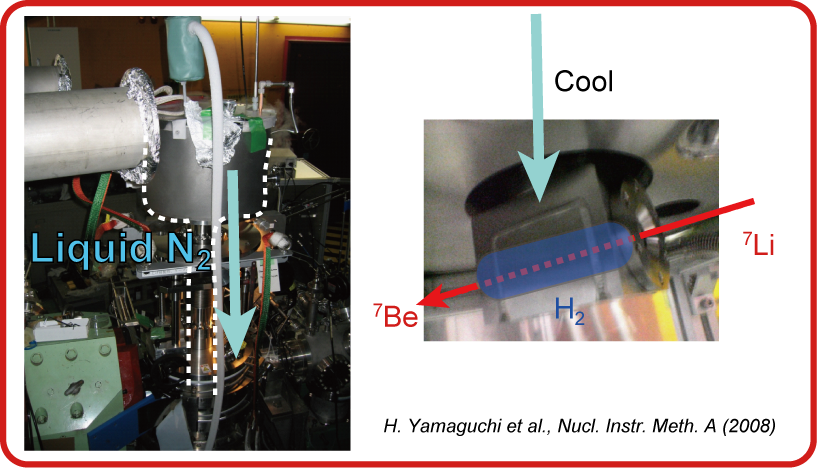 |
Development of a cryogenic gas targetWe are using light atoms such as hydrogen as a target for the production of RI beams. We developed a system to cool the target gas with liquid nitrogen. By cooling, the density of the target gas becomes higher, and we can have a more intense RI beam accordingly. We are also able to make a forced-flow of the target gas by a pump. It was a known fact that an irradiation of an intense accelerated heavy-ion beams can make the target gas effectively thinner, because of the dissipation of the gas by heat. Using our system, it was proven for the first time that a forced flow can be effective for reducing the dissipation of the gas. We successfully produced a 7Be beam with an intensity of 2 x 108 per second, which is quite high for a secondary beam. |
For reference information, please see Publications page.